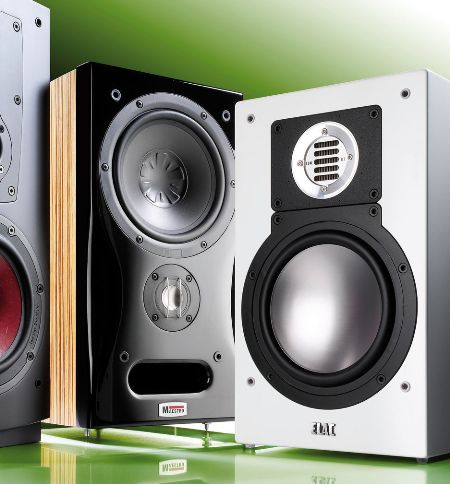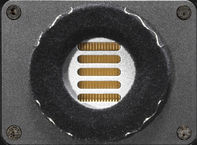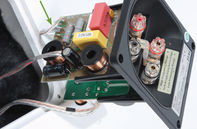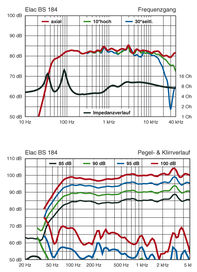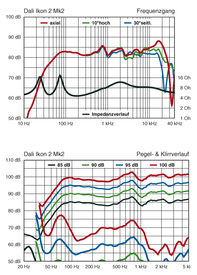Compact speakers: Elac BS 184, Dali Ikon 2 Mk 2, B-One German Maestro
Incredibly, the power and vitality sprayed by Elac BS 184 (€ 800) in "Synchronicity II" by The Police. Elac scores for years with its own tweeter technology: the JET tweeter above, folded several times magnetostats that follows the Air Motion Transformer principle of Oskar Heil. There is basically one problem: they are expensive to produce because they require both precision and craftsmanship. The BS 184 breaks down the 1,000-euro mark for the first time for a JET-packed compact speaker, yet equipped with powerful low frequency. The BS 184 is similar in concept to the BS 204 and BS 244, but must be content with a somewhat simpler cabinet and a "normal" (not Crystal) sandwich woofer membrane made out of paper and aluminum.
Great design work reveals the turnout - it contains not only the filter and phase equalizers, but also a small patch panel, which can compensate for level differences in the series from the tweeter. A very useful feature is the DC ring (Dispersion Control ring), that can be used to reduce the Elac - already elaborated, final dispersion, corresponding to benefits like homogeneous tonality and precise image. Rock-StartTurned it directly from the Heco Celan XT 301 on the Elac, one could not escape the impression of a freshly cleaned window pane: Was the Heco more comfortable and reserved, beaming with the BS 184 the music all the more brighter, clearer and clearer ...
But with popular music, the tide turned: how balanced-voluminous and yet playful BB King and Eric Clapton with her "Riding With The King" had to act on the left and right in the listening room.
|
| Dimensions (W x H x D) | 23.0 x 37.5 x 30.0 cm |
| Weight | 9.5 |
| Surfaces | Paint, foil |
| Bass principle | Way bass reflex |
Dali, Elac and German Maestro but do not give in with the familiar. You play with the tweeter concept beyond the norm.
Tonal form the German maestro and the Dali are at the antipodes in the field: the former is adjusted slightly decreasing trend with relatively warm response should therefore be directed precisely to the listeners. Musty-sounding and are in the heights overdamped rooms avoided. In the latter feels more comfortable Dali, who has noticed a slight amount of stress axis and therefore should not be bent.
A sensible compromise is the Elac, which can also boast excellent value for bass extension (43 Hz) and peak level (102 dB). The Dali is even constructed a little lower (39 Hz), gets it at 99 dB already at the compression threshold. Since this is only in a narrow range of cases, it is subjective, just as dynamic as the German Maestro (103 dB).
Interesting are the impedance curves, which are central in all three boxes a very good-natured course. In particular, the German Maestro not achieve the criteria for the 6-ohm standard, and recommends itself as a resource for vintage amp or something more stable tubes.
Fairs and hearing
Elac BS 184: Well-balanced with a slightly decreasing, but extensive bass, uniform load to 4 ohms down. THD continuously at a low level in bass, amazing reserves. AK: 64, Impedance: 4 ohm
Dali Ikon 2 Mk 2: Balanced with slight waviness, höhenbetont axis on the side of neutral. Gentle impedance missed, just the 6-ohm standard. Gutes Rundstrahlen. Good omnidirectional. Increased Mittenklirr, clean otherwise. AK: 65, Impedance: 4 ohms.
German Maestro Linea S B-One: Neutral, profound or right. Very good-natured but slightly varying impedance, excellent dispersion. Very little distortion in the upper bass limited, some compression. AK: 65, 6 ohms impedance
Conclusion
All three play tonal "in the green zone," yet they have unique tastes: the German maestro is expansive and intimate, ideal for classical and jazz. The Elac plays energetic, straight and is growing at more pop and rock beyond itself.


